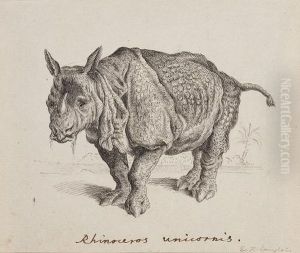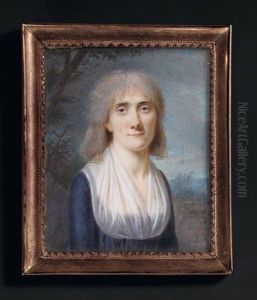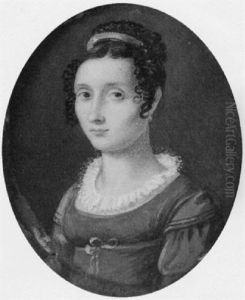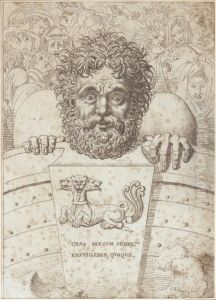Eustache Hyacinthe Langlois Paintings
Eustache Hyacinthe Langlois, born in Pont-de-l'Arche, Normandy, France, in 1777, was a distinguished French painter, draughtsman, and engraver, celebrated for his contribution to the Romantic movement in art. His life and career encapsulate a period of significant transformation in French art, reflecting the tumultuous political and social changes of his time. Langlois showed an early aptitude for art, which was nurtured despite the chaos of the French Revolution and the Napoleonic wars that marked his early years.
Langlois was initially trained by his father, who was also an artist, before moving to Paris to further his education. In Paris, he became a student of the renowned Jacques-Louis David, the preeminent painter of the Neoclassical movement. Under David's tutelage, Langlois honed his skills in drawing and painting, mastering the neoclassical style of precise form and clarity. However, as his career progressed, Langlois began to delve into the nascent Romantic movement, which emphasized emotion, individualism, and the sublime in nature, diverging from the strictures of Neoclassicism.
Throughout his career, Langlois was known for his versatility across different media, including painting, drawing, and engraving. He was particularly acclaimed for his engravings, which displayed not only technical skill but also a keen eye for detail and emotion, making significant contributions to the illustration of books and journals of the time. His works often depicted scenes from French history and mythology, imbued with a romantic sensitivity that was becoming increasingly popular.
Langlois was also a passionate educator and art historian, dedicated to the study of Normandy's rich historical and architectural heritage. He played a crucial role in the preservation of Rouen's medieval architecture, advocating for its protection against the urban renewal projects of the 19th century. His scholarly works, including studies of Normandy's monuments and an influential treatise on iconography, underscored his commitment to the intersection of art, history, and preservation.
Despite his contributions to French art and heritage, Langlois' work was not widely recognized outside of France during his lifetime. He spent much of his career in Rouen, where he was a central figure in the local artistic community, contributing to the city's cultural life through his art and scholarship. Eustache Hyacinthe Langlois passed away in 1837, leaving behind a legacy that would only be fully appreciated in the context of the Romantic movement's evolution and its influence on the development of modern art.




